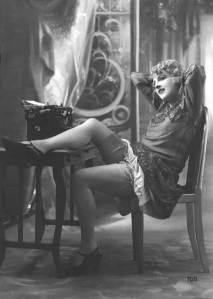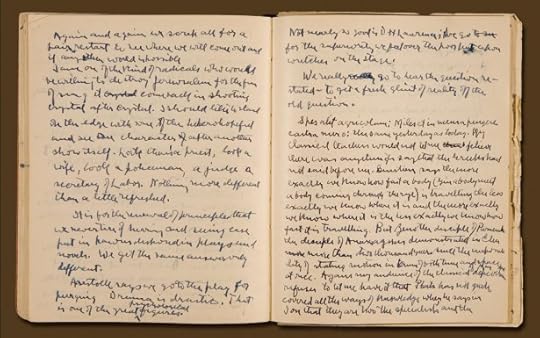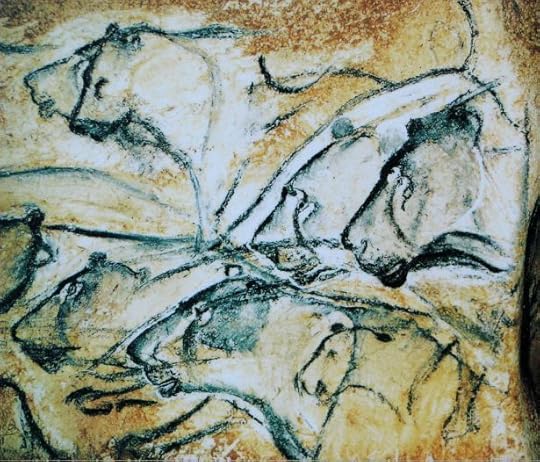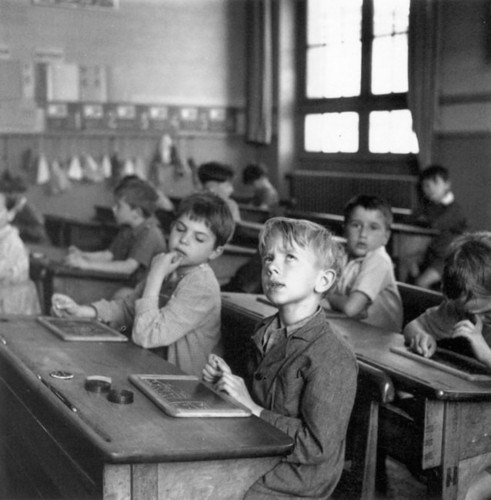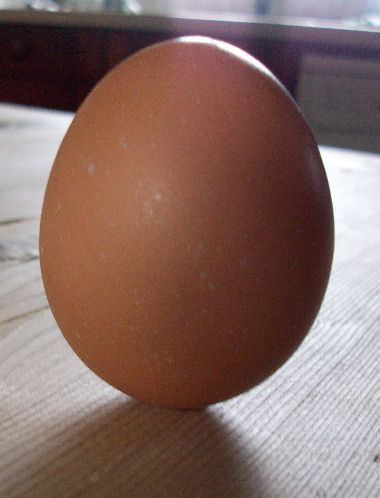Kelly Barnhill's Blog, page 6
June 9, 2014
The Mountain Dew Guy, the Snickers Guy, the Hot Cheetos Guy, the Taquis Guy

My daughter’s school, like many others, has banned the sale of junk food on the premises. This astonishes me, given that she goes to the same high school that I went to, and I can’t imagine my high school career without the rush to the pop machine after third hour in hopes that you might be able to drop your quarters in and snag a soda AND eat your lunch in the same twenty minute time-squeeze they called a lunch period. I can’t imagine a South High experience without those gooey chocolate chip cookies that they were always selling four for a dollar, which tasted exquisite for the first bite or two, followed by a mournful compulsion, followed by nauseous regret.
I mean really, how can one experience the true euphoria of post-track-practice -high without the requisite bag of Funions or Reese’s Peanut Butter Cups? Is it even possible? Kids today live lives of deprivation and woe, and I am sorry for it.
The pop machines were the first to go. The candy machines followed shortly after. And high school, for a very little while, became a very sad place.
Today, I was Target with my fourteen year old, shopping for god knows what.
“Mom,” she said. “Mom. Mom. Mom.”
“What, what, what,” I said, as I was trying to catalogue the entire contents of my fridge and pantry in my head, and plan for the meals for the next few days, and curse myself for not thinking ahead and writing out a damn list.
“Mom. Mountain Dew. It’s on sale. LET’S BUY SOME.”
I stopped in my tracks. “What are you talking about?” I asked. “You’ve never had Mountain Dew in your entire life.”
“Shows what you know,” she said. “I have it every day.”
“How?” I asked.
“The Mountain Dew Guy.”
“I hate that kid.”
“HE’S THE BEST.” She nearly shouts this. In the middle of Target. People turn and stare and wonder if my kid is crazy. Yes, I want to assure them. Very much so.
The thing is, I already knew about the Mountain Dew Guy. Ella’s spoken of him frequently. With the elimination of the vending machines in an effort to make our kids more healthy and whatever, an underground economy quickly sprung up in the halls of South High, and I’m guessing other high schools as well. A cottage industry of sorts. Or a backpack industry.
This is how it works: There are kids at school with suspiciously overstuffed backpacks. They sit down in the lunch room – or anywhere really – with the backpack sitting next to them, unzipped, the merchandise visible, but easily hidden from the adult gaze by the quick application of a math book or whatever. The independent vendors have their particular specialties. There’s the kid who sells Mountain Dew (“You want to get that right away in the morning, because it’s not cold anymore by third period,” Ella explained.). There’s the kid who sells Bugles. There’s the kid who sells Snickers. There’s the kid who sells Skittles. There’s the kid who sells protein bars. There’s the kid who sells Coca-cola. There’s the kid who sells Gatorade. Each one has a single item specialty, though there are a few who cycle through different products depending on the day.
Kids sidle up. They already know the price. Everything is one dollar. No one decided this, of course, but it is the easiest denomination to scrounge for the high school consumer. “Anyone can find a dollar,” Ella explained. “And sometimes we pool our coins together and share the Mountain Dew.” Which explains why her entire lunch table all succumbed to Strep Throat in the exact same week.
“Mountain Dew is really bad for you,” I told her. “You really shouldn’t drink it.”
“I don’t do anything else bad for me,” she countered.
“This is true,” I said, “but I’d rather you choose something good. Like French chocolate. How about you get hooked on that?”
“Is it a dollar?”
“No,” I admitted.
“Well then.”
She picked up the twenty-four pack of Mountain Dew and gave me the giganticest smile in the world – all braces and pink cheeks and hope. “Please?” she said.
“Not in a million years.”
“You’re not as nice as the Mountain Dew Guy, Mom,” Ella said, walking dejectedly behind me, appearing to all who noticed as the saddest fourteen year old in all the land. “You are not as nice at all.”
“I know, buddy,” I said.
And so afterwards I took her out for lattes. Which are somehow better for her, though I haven’t yet figured out how. Reasons, I expect. They are better because of reasons.
Filed under: Uncategorized Tagged: junk food, raising teenagers, South High School


June 2, 2014
Regarding BEA, the Kids Author Carnival and other NYC shenanigany stuff.
This weekend, I had a whirlwind, didn’t-see-90%-of-the-people-I-hoped-too-but-still-saw-SO-MANY-GOOD-FOLKS, magnificent visit to good old New York City in order to participate in Book Expo America, or BEA for those who know the publishy-lingo. I went because my book had been chosen as a Middle Grade Buzz title, which was a huge and astonishing honor. My publisher, then, was kind enough to introduce me to lots of librarians and book sellers, and to make a goodly stack of the ARCS of THE WITCH’S BOY available for those who wished to read it before the book came out.
A lot of people wanted it, apparently, because within the hour, the goodly stack was a memory of a goodly stack and all the books were gone. This was surprising to me.
Anyway, some day soon I am going to write a love poem to my publisher, Algonquin, who is filled with wondrous, magical and fiercely intelligent people that I absolutely adored meeting and talking to and getting to know. Meeting the whole team was nothing short of a joy. Plus they made this cool poster for the books – both for kids and adults – that are coming out soon. See?
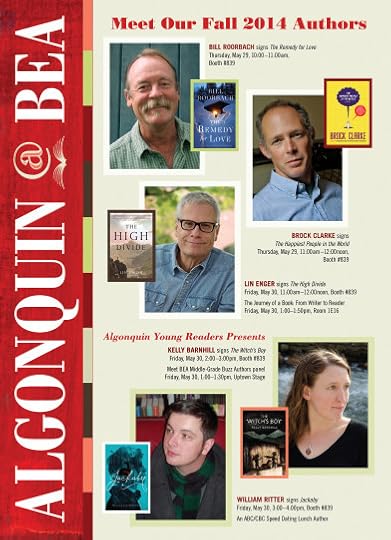
Anyway, I am still processing much of the many wondrous conversations I had over the course of the long weekend, and I am still rather jumbled up, I’m afraid. Instead, I will have to provide a List of Highlights. Ahem:
1. Meeting my beloved editor, Elise Howard, for the first time.

In case you did not know, I am a giant.
Seriously, you guys. She is amazing. I have been telling people for the last year and a half how much I have treasured my experience at Algonquin, how my editor’s insight and intelligence and her knack of seeing not only the bones of the story, but its sinews and connective tissues – the chambers of the heart, the connections in the brain, the ineffable soul (all of it; she sees all of it) – have pushed me into a space in my writing, and a level of artistry, that I never would have reached on my own. And I am forever grateful. And I absolutely LOVED meeting her and hanging out and picking her brain and listening to how she works and even chatting about random things – kids, other books, goofy goings-on in NYC. The whole bit. It was most grand.
2. I lost my phone. Three times. And found my phone. Three times. Which was a blessing.
3. Bringing my husband along. I have never done this, actually. And, as it turns out, it was the first time we were away from our kids since 2003. For those of you doing the math at home, that was . . . some years ago. In any case, there is nothing like getting organized for a panel – a Buzz Panel, no less – and seeing your favorite friend in the audience.
speaking of . . .
4. THE BUZZ PANEL! It was awesome!
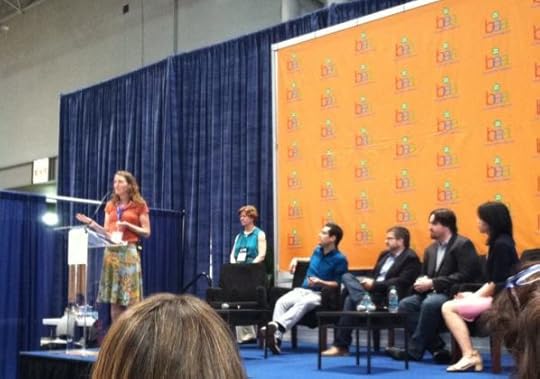
Despite various snafus regarding microphones (which is why I am standing at that podium instead of facing the people I was actually talking to) we actually had a great conversation. I enjoyed the heck out of all of those people (and Rob and Kat, your books are currently being read to pieces by my kids. So.)
5. THE KIDS AUTHOR CARNIVAL! Also awesome! Thirty-seven kidlit authors and an army of bloggers and great crowds of book-loving kids! And how great was it to hang out with hordes of kids swarming the halls of the Jefferson Market Library (which, by the way, looks like Hogwarts), with a bunch of my kid-writer buds that I’ve known for months or years online, but only just got to meet in real life. This whole thing was organized by Claire LeGrand - who is just as amazing in person as she is on the page – and it was a huge success. I had no less than twenty parents come up to me and say that this MUST happen next year. And I agree.
6. Catching up with my beloved Genevieve Valentine, whose new novel, THE GIRLS AT THE KINGFISHER CLUB (a retelling of “The Twelve Dancing Princesses” story in 1920′s Manhattan) (I KNOW! I think you should read it too!) releases tomorrow.
7. LIBRARIANS! SO MANY LIBRARIANS! I met children’s librarians and teen librarians and regional librarians and school librarians and legal librarians and scholarly librarians and possibly-nefarious librarians.
(“But,” my son asked. “Were any of them ninja librarians. Or secret-super-hero librarians?” “Yes, my darling, ” I told him. “They all were.”)
8. The food! The best part of any NYC visit is the food. And yes. I am still full.
9. The books! I have three tote bags full of books that I managed to haul all the way back home. My arms hurt. And my eyes are tired because I stayed up too late reading. There are worse problems to have.
10. Standing for an hour chatting with people at BEA, signing book after book after book until my hand started to shake, and meeting people that I have had lovely and heart-felt exchanges on Twitter, and seeing their beautiful faces and hearing their beautiful voices, and realizing that social media – despite its capacity for silliness and cruelty and infantilized blatherings posing as profound – really does bring us together. It truly, truly does. To those of you who I met for the first time, but have known for far longer than that, I’d like to say this: thank you. Thank you for stopping by. Thank you for lending me your time and your spirit. Thank you for existing in the world. Thank you for your continued conversation with me about books and culture and race and gender and childhood and teenhood and growing up. About the world and everything in it. About the universe we know and the universe beyond. Thank you so much.
Okay. Now to get back to writing. Because this book isn’t gonna write itself.
Filed under: Uncategorized Tagged: Algonquin Books for Young Readers, BEA, Childrens literature, writers


May 26, 2014
“Where do your characters come from?”
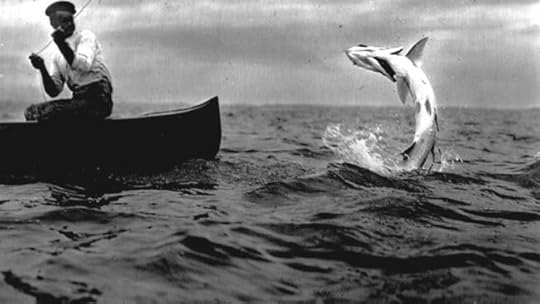
I’m sure I am not the only writer that gets this question. Usually it’s about halfway through the question and answer period after a reading, or during a school visit. The hand goes up. I know they’re going to ask it before they do. I brace myself.
“Where do your characters come from,” they ask. And I wince.
Because I seriously have no idea how to answer this question. At least not in a way that makes me sound sane.
But it shouldn’t sound insane. Not really. This is something that we do – all of us, all the time. We create characterizations out of nothing. We see people walking down the street and we make thousands upon thousands of assumptions about them, without even realizing that we are doing so. Our brains are built for narrative. We think in narrative, understand in narrative, process memories in narrative. It is the structure in which we organize information and construct truth. We may be walking down the sidewalk and see a broken bottle in the grass, and then go a little bit farther and see a cast-off shoe, and then go a little bit farther and see a bare spot in the boulevard, or some trampled flowers, maybe, and we start to connect the dots. We start writing a story. We can’t help it. It’s our brains, you see?
Similarly, if I sit down on the bus, and the man who sits down next to me has a very long beard and very callused fingertips and hand-patched jeans and a tattoo that says “meat is murder” with a drawing of a pig wearing a crown of thorns (this happened to me once; I stole the tattoo and put it in one of my books)? Well. I start inventing all kinds of stuff. It’s a long bus ride. What else am I going to do. And by the time the bus ride is over, I already know that a woman named Elsie broke his heart and that he plays his guitar every night, trying to find the memory of her voice in the harmonics between the strings, and that his grandmother always called him by a name that was not his own and never explained why and that he hasn’t spoken to his mother in six years, even though she leaves a message on his phone every single day that says the exact same thing, “I’m just thinking about you and I love you. Call when you have a sec.”
He hasn’t told me any of these things, of course. And the character in my head isn’t him. Of course it isn’t. It’s just someone like him. It was my brain connecting the dots. It was my brain doing the work it is built for, which is to say, stories.
“Where do your characters come from?” they ask and I always want to shoot back, “Where does anyone come from? Your teacher, your friend, the guy who opens your drains, the meat inspector with the limp, the check-out clerk at the gas station with a wad of gum the size of a golf ball. Where do any of them come from?” And how can we separate what we know about the people we meet with what we invent? I don’t think we can. I think the creation of knowledge requires imagination. And that the world that we live in is largely imaginary. We invent the world around us and the people in it, again and again. We weave the known and the unknown into an experience that is uniquely ours. And we don’t even know that we’re doing it.
Instead I just say that I go fishing. I cast my nets into the sea of the mind and pull in a character. I don’t do this at all, but it is a quick and easy way of answering the question.
I get asked a lot which character is me. “Are you Jack?” they ask. “Are you Wendy or Violet or Cassian? Are you Ned or Aine or the horrible King Ott? Are your Sister Witch or Uncle Clive or Aunt Mabel? Which one are you exactly?”
The answer, of course, is none of them. And all of them. But mostly none. These characters have elements in them with which I identify, but they are not me. They are themselves. I met them one day and I got to know them, and I lived with them for a while. And I loved them. Each blessed one. They were like those roommates that you have in the crazy living situations that you get into those post-college ennui years when your life hasn’t quite found its feet. Those people that you stay up with until the sun rises talking about books or politics or music or whatever. Love. Loss. Love again. And you love them. Profoundly. And then their lives take a turn, or your life takes a turn, and they slip into the wide world and do not look back.
All you have then is a story.
The fact is, the world is filled with deeply interesting and broken and brave people. I have never turned anyone I’ve met into a character in my book. But I have honed in on the strange gifts of Self that people offer to me. I have kept little bits with me from my conversations and connections that never go away. For example: Once, when I was in my early twenties, I worked at a coffee shop in Portland, Oregon. It was a great job for an insomniac because I had to be there at quarter to five in the morning, when I was already up and fussing, and it gave me something else to fuss about. And I met a lot of interesting people in that job. For example:
The city inspector who would get really mad when people would ask if that little child was his granddaughter. He was sixty. His wife was twenty five. Every time someone said “granddaughter” his face would go red and his lips would suck in and he would hit the nearest table with his fist.
The lady who insisted that we call her “Mrs. Q” – I never learned her actual name. She was incredibly old – a body diminished to sticks and feathers and rice-paper skin. She had deep folds above her copper-colored eyes. She came in every day for a decaf latte that she would never finish. And every day, she would take out a yellowed sketch book. She never drew. She just looked at the pictures. I never knew why.
The guy who sold his zine (remember zines?) every Saturday from one of the back tables. No one bought them, so he started handing them out for free. He had been born a girl, and his wife had stayed with him loved him through his transition. I had never met a transgendered person before, though I know many now. I remember reading his zine – and he was very frank in his discussion of the trans experience, as well as his call for trans acceptance and the rights of all individuals across the gender spectrum – with a hunger for understanding. It’s not every day that someone gives you an open door to their experience, you know? He loved old band tee-shirts and he had very small feet, but large hands. He also had begun to lose his hair – an effect of hormones, he told me. “You don’t know before you start all this if you’re the guy who’s gonna go bald,” he said sadly, running his hand through his thinning hair. I told him it made him look distinguished. And I meant it.
And Horst. Oh, Horst! I’m pretty sure he was in the country illegally. He had been a student at the University of Oregon, but that didn’t work out, so he moved north to Portland. He always paid in cash, and said he avoided bars because he “didn’t believe in photo identification”. Horst was in his late twenties – blond, tall and narrowly built. He had high cheekbones and profoundly blue eyes. He asked me out every single day. Sometimes more than once a day. He knew I had a boyfriend (though I never said boyfriend. I said partner, because we were modern and forward in our thinking. And then people played the pronoun game, trying to pin me down as to which kind of partner I had exactly.). Horst was always cheerful about his lack of chances. “Make sure to tell me the second you’re single,” he’d say, giving a gentlemanly bow. The last time I saw him, it was December, 1998. I was twenty-five and recently pregnant, though I didn’t know it yet. Horst shows up in a long wool coat, covered, I remember, with tiny drops of rain, each shining like a jewel. He removed his hat. He had a purple, handmade scarf wound many times around his neck, and his face was so pale, as though he was made out of milk. He bowed again.
“I must bid you farewell, dear lady,” he said. He was always talking like that.
“Where are you going?” I said.
“I am taking my Volkswagon and traveling the width and breadth of you nation. By this time next year, I will be taking up residence in the desert, where I will prepare for Y-2k.”
There were a lot of these in Oregon at the time. Doomsdayers. Survivalists. My partner-soon-husband had just gotten a job with the city helping them with Y-2k readiness. People thought their microwaves would explode and their computers would melt, and that there would be utter anarchy.
“Why do you need to be in the desert to prepare for Y-2k?” I asked.
“You see, dearest,” he said, “we are entering a new phase of the human experiment. Currency as we know it will cease to exist. And good riddance. Numbers as we understand them will also cease to have meaning. Good riddance to that as well, I say. We are entering a time that we have been destined to enter since we first climbed out of the trees and learned to work together. Kindness will be our currency. Love will be our numbers. And an age of blessed one-ness will descend upon us all like sunshine.”
“Really?” I said.
“Most definitely,” he said.
“And the desert . . .”
“Oh,” he said with a casual wave. “I just like it.”
And then he bought a cup of chamomile tea. He paid for it in cash. And he foisted a fifty dollar bill in my hand as a tip. “Make sure you spend it this year, though,” he said. “It will just be paper soon.”
I have never put Horst in a story. But I think about him all the time. And I like to think that he is in the desert somewhere, staying in an old trailer, or a small cottage atop a small rise so he has an unobstructed view. And I like to think that he still has that scarf because the desert gets cold at night. And I like to think that he is paying for things in kindness. Because he is kind. And why not? And I like to think that he is meeting people and talking to people and that they are creating and storing stories of their own. That Horst exists in the narratives of people all over the country. And that he is everywhere. Perhaps in a story that you are writing, right now.
Filed under: Uncategorized Tagged: Creative writing, fiction is my job


May 22, 2014
“My god, Bones. What have I done?”
I woke up this morning and discovered there was no tea.
And then I remembered that there wasn’t any tea by ten o’clock yesterday morning and I had intended to go to the store. And I forgot to do it. And not I am standing in the kitchen and my world is like this:




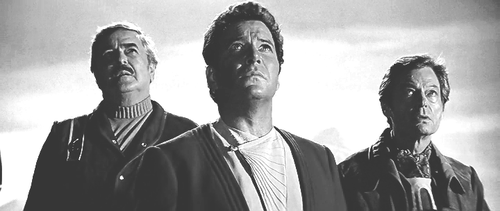
I had a thing I wanted to blog about, but I can’t remember what it was because I don’t have any tea and oh god, oh god, oh god.
If any of you are able to beam me some caffeine, I would appreciate it.
Love forever,
Kelly Barnhill
Filed under: Uncategorized Tagged: benign addictions, Star Trek, Tea


May 12, 2014
BEA, Kids Author Carnival, and other items of note.
The sky outside has been promising rain for over an hour, which means that I have been delaying my run. It still hasn’t rained. It still wants too. And since I’ve already cleaned, I suppose I should actually try to write something. Actually, this is perfect writing weather – the creek flows, swollen and fast, just beyond rim of my yard. And the world between my window and the water is green, green, green, green. You’ve never seen anything so green. The sticky buds of the crabapple tree have finally burst, and the small leaves are shiny and supple and new.
Is there anything more beautiful than Minnesota in spring? I don’t think there is.
Anyway. Items of business. There are many, so I think I shall number them.
IRON HEARTED VIOLET HAS BEEN RELEASED IN PAPERBACK!
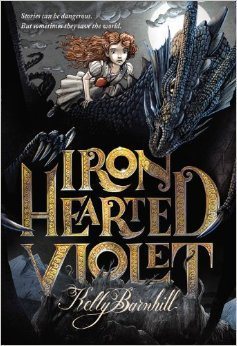 I know. This is old news. But I got out of the habit of blogging, and I managed to not say it here. But I should say it, because, VIOLET! And DEMETRIUS! and THE DRAGON! And NOD and MOTH and AUNTIE and even CASSIAN! I have missed them, I really have. It’s a funny thing, living with characters for months and months and even years. You inhabit their skins, you hold their beating hearts in your hands. You know them by touch, by smell, by taste, by sound. You know them better than you know yourself. And then you put them in a paper boat and launch them into the river and pray they make it safely to the Sea. I loved them. I will never touch them again. That is one of the many tragedies of authorship. (Well, that and all the cigarettes and jazz and liquor and bad dates with Hemingway and the general Loose Living of the Author’s Lifestyle.) (I’m just kidding.)
I know. This is old news. But I got out of the habit of blogging, and I managed to not say it here. But I should say it, because, VIOLET! And DEMETRIUS! and THE DRAGON! And NOD and MOTH and AUNTIE and even CASSIAN! I have missed them, I really have. It’s a funny thing, living with characters for months and months and even years. You inhabit their skins, you hold their beating hearts in your hands. You know them by touch, by smell, by taste, by sound. You know them better than you know yourself. And then you put them in a paper boat and launch them into the river and pray they make it safely to the Sea. I loved them. I will never touch them again. That is one of the many tragedies of authorship. (Well, that and all the cigarettes and jazz and liquor and bad dates with Hemingway and the general Loose Living of the Author’s Lifestyle.) (I’m just kidding.)(Note: My life is not like this at all. But it is totally what I thought my author’s life would be when I was a dreamy eighteen year old.)
First Book! On Wednesday and Thursday, I’ll be at Northport Elementary School, as part of First Book. If you don’t know this organization, you really should. They provide books to children in need, and partner with local companies to bring literacy volunteers to read with kids. One of the hard truths about kids in poverty is that their access to books is severely limited. Add to that the fact that they aren’t read to nearly as often as their more monied classmates (which is perfectly understandable when parents are working three or four jobs just to keep the lights on), which means that kids in poverty are often coming into Kindergarten with a language deficit – a 2000-word vocabulary, as opposed to a nearly 7000 word vocabulary for kids in the middle classes. Having better access to books is vitally important, and I am so thrilled to be partnering with this fine organization. I used to teach at a school in which 92% of our kids were over the poverty line, and later was a GED teacher for homeless youth, so this really feels like the different threads of my life are coming together. On Wednesday, I’ll be doing writing workshops with the kids, and talking about the writer’s life (see above), and on Thursday, I’ll be jazzing up the volunteers. Should be fun!
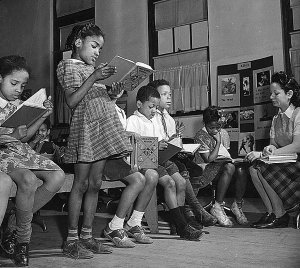
BEA! I’m going! I’m terribly excited, of course. I’ve never been, and from what I understand, it is something similar to being called to the Mother Ship. My new book, The Witch’s Boy, was selected as a feature for the “Buzz Forums” at BEA this year. I had never heard of this, because I live under a rock, but my friends in the know assured me that this was a Big Deal. In any case, I’m super excited to go. And now I have to figure out how to do this thing without making a total fool of myself. If you are planning on being there, you should come and see me. I’ll be signing too, so you can stop by the Algonquin booth and find me there, but seriously, you guys? I could really use a friendly face or two in the crowd at the buzz panel. Stop by if you can!
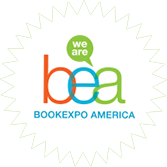
THE KIDS AUTHOR CARNIVAL! Seriously, how the heck did I end up on this lineup. This is insane! And wondrous. As an advocate for children’s literature and a reader of children’s literature and a sharer of children’s literature and a writer of children’s literature, I think this is just the greatest thing ever. Saturday, May 31. You’re coming, aren’t you? WELL, AREN’T YOU???

And lastly! My book doesn’t come out for quite a while, but the first blog review has been posted. And she wrote an Ode. AN ODE! It did indeed warm the cockles of my cold, cold, heart. The first professional review goes live on Wednesday (I think), so expect a link. But in the meantime, you can read this one. She sure was nice to my dear Ned and Aine.
And that is it, my dears. It is time for me to dive back into THE SUGAR HOUSE. Beautiful Miss Lacy will get more spidery, and awful Mrs. Otterholt will get more goddessy, and all the while poor, beleaguered Nate will have to figure out how to do right without getting himself into more trouble. What are you working on today?
Filed under: Uncategorized Tagged: Appearances, Authory Stuff., BEA, Childrens literature


May 9, 2014
One More Thing About Teaching . . . the side benefits.
I’ve been doing fiction workshops in schools for a bunch of years now, and one would think that I would have made it easier on myself by creating a bunch of fairly standardized lesson plans so I wasn’t having to make it up as I went along every dang time. Alas, if one should think such a thing, one would think wrong. I’m not much of a planner as a general rule. When I shoot, I shoot from the hip. Every time I organize a workshop, I re-invent the whole thing. It’s the only thing I know how to do.
This year, I decided to teach the kids about story structure – cause/effect, three-act, non-linear, etc. I had them plan out the stories they had started, starting with fleshing out their main characters, identifying the central problem and mapping out what was going to happen in the beginning section, the middle section and the end.
To demonstrate what I wanted them to do, I pulled out the longhand manuscript of my new WIP, called The Sugar House, and did my own story plan on the white board. So as they were planning out their stories, so I was planning out my own. And talking about my own. And wrestling out loud.
And here’s the thing about spending time with third and fourth graders. They are incredibly encouraging.
“Wait,” one boy said, after I had written the central problem for The Sugar House on the Smartboard and was waiting for the kids to write down their own. “Is that book out?”
“Which book?” I asked.
“That one,” he said, pointing to the notebook in my hand.
“Oh,” I said, “No. As you can see, I’ve just hit the 150 page mark in my notebook, and I’ve run out of space. So now I’m going to start transferring it into my computer, expanding the details, and do fussy little things like work out the ending.”
“Oh,” the boy said.
Later as I wrote out the main events – beginning, middle and end – for The Sugar House as a demonstration, and waited for the kids to write their own, the same boy raised his hand.
“Well,” he said. “It looks like you did it.”
“Did what?” I asked.
“Worked out the end. Right there. ‘Nate and Mrs. Otterholt save the day even though they still hate each other’s guts.’ That’s a GREAT ending.” He smiled encouragingly.
“Well,” I said. “Thank you. I actually haven’t gotten that far yet in the actual narration, but I’m pretty sure that’s how it will end. I’m glad you like it.”
He paused. Raised his hand again.
“So,” he said. “It’s coming out, like, next month maybe?”
“No darling,” I said. “But I’ll let you know when it does.”
“Good,” he said. “Because I can already tell it’s my favorite book.”
And that’s what it’s like with these kids. I read them sections from The Witch’s Boy and they tell me it is their new favorite. I read them sections from other books that I love - Winter of the Robots, Breadcrumbs, Goblin Secrets, The Thirteen Clocks - and they tell me those are their favorite books too. They stand up when I walk by to give me a hug. They ask me to autograph random scraps of paper which they shove in their pockets, lose, and then ask again the next day.
I have spent the last year staring at my manuscript in a state of utter fear – writing, erasing, writing, erasing – wondering why I do this job at all, wondering why I scribble words just to pronounce them failures and kill them forever. Wondering how I could ever hope to do right by these characters whom I love so very much.
And then I go to a classroom. And I share my characters with kids. And the kids love them as much as I do. This right here – this is why I teach. I teach to remind myself why I write, and I write to have the opportunity to connect with the kids I teach. The two are connected. And it’s only when I’m in the classroom, that I can feel that connection in my bones.
Time to get back to class. I hope everyone has a wonderful Friday!
Filed under: Uncategorized Tagged: COMPAS, kids are awesome, teaching artist


May 8, 2014
This is the Work You Were Born For: some thoughts on teaching kids the practice of Story
Good grief. I haven’t blogged in over a month. What on earth have I been doing?
(actually I know exactly what I’ve been doing, and I’ll get into that in another post. right now I have important things to discuss with you. ahem.)
Anyway, once again I am spending a week with some amazing third and fourth grade students at Chanhassen Elementary. I’ve been doing this same residency for a number of years now, through my work with Compas Arts, and every year I am stunned by the brains of elementary school kids.
They are philosophers, these kids. They are scholars. They are giant hearts with legs. They are analysts. They are deep thinkers. They are Big-Idea-Types.
One of the things that I do at the beginning of the residency, is I get the kids all jazzed up about writing stories by talking to them a bit about why we tell stories at all. Because they all know stories – of course they do. They read them and listen to them and watch them on television. They act them out. They observe them in photography and sculpture and paintings. They watch high drama unfold every day in the casual gestures of their parents or the overheard side commentaries of their classmates in the hall. These kids are always engaged in Story.
So I tell them stuff about stories. Big stuff. Broad stuff. Big Idea stuff.
“The act of making a story is not the words you write on the page,” I tell them. “When we write the words on the page, we’re just making a pathway for the reader, and a pathway for ourselves, to journey toward the story. The story, you see, is separate. It is a prize waiting at the center of the universe of your brain, and only you can take us to see it.”
Stuff like that. They eat it up, these kids.
“Stories,” I tell them, “are uniquely human. When we write a story or think a story or tell a story or listen to a story, we are connecting ourselves to every other human being who has ever written or thought or told or listened to a story. We are connecting ourselves to the larger human family.”
I tell them this, and they are itchy to start. I can see it in their hands – the way they hold their pencils.
“Human beings,” I tell them, “have told stories even before they had language. At first they told stories through song, through dance, and through rhythm. They made pictures in the mud. They painted on caves. They invented language to be able tell stories more effectively and efficiently.”
This blows their minds, actually. I can see it on their faces. I have to work pretty hard at the beginning of the class to catch all their attention in my little butterfly net and hold them close to me, but at this point, I could stand perfectly still, and each one of my little butterflies would simply cling to my hands and arms and eyes. They don’t fly away. The kids hold their breath. I hold my breath. This is my favorite part, I think.
“Telling stories is your birthright, folks.” This is true, you know. I wouldn’t say it if I didn’t believe it. “This idea. This story in your head. These words that are about to pour like water out of your giant-bucket brains and onto the page. You were born to do this work.
And then they do. With gusto.
So far, I have gotten stories of hidden super powers and stories of kidnapped parents and stories of hidden treasure and stories of mad scientists who only wanted to find a way to make their teeth stop hurting. There have been friendly bears, wicked giants, dragon librarians, stealthy spies and a boy who becomes King of Poopland. I’ve gotten stories about a best-friend-zombie and a best-friend-talking-bunny and a best-friend-ogre and a best-friend-robot. I’ve gotten stories about a mall full of people suddenly possessed by ghosts and two sworn frenemies who are the only ones who can fix the situation. I’ve gotten stories about parents who download an app and then their children disappear.
So many stories.
And it’s good for me, even though it wears me out – the driving, the teaching, the geyser of enthusiasm that pours out of me every class period and with every interaction with students. It’s tough on an introvert. Necessary, yes, but tough. My family has been most attentive and sweet when I come home. But still, I love doing it because, even as it depletes me, it fills me up at the same time. Standing in a room full of thirty kids all attacking their pages at once, writing furiously as though chasing their stories down like bison on the plain? Well. As I pour, so am I filled. It’s amazing. And bearing witness to the raw enthusiasm from these kids, their joyful chase of the stories in the bright Universes of their brains, that I, too, am born to do this work – this teaching, this writing, this sharing of stories. And that it matters, you know?
The story matters. The telling matters. The sharing matters. The reading matters. It all matters.
It’s nice to be reminded.
I have more to say, of course, and some Very Cool Stuff About Various Books to share with all of you, but that will have to wait until tomorrow. I gotta go get ready for class.
Filed under: Uncategorized Tagged: Childrens literature, compas arts, fiction, Teaching, teaching artist


March 20, 2014
When Light Balances Dark: on wrong numbers, new life, certain death, and the slumbering spark.
Happy Equinox, everyone. I have been told that this is the day in which we are magically able to balance the unbalanceable – eggs, specifically. I’ve never been able to, myself. And I’ve tried, believe me. It is also the day when the cosmic and equal forces of light and dark – our inward and outward natures – supposedly come into perfect balance. We see and we are seen, we know and we are known, we give and we are given to. On this day we honor the hidden pulse of life under the shrinking snow, and check for signs of its emergence – knowing that it requires the decay of crystal and glitter. The death of snow. The death of ice. The language of cold, written on the landscape, must loosen, drip, rot, and sink into the ground. Even in the face of life, some things must still pass away.
I had a conversation with my mother yesterday about my beloved sister-in-law, nearly bursting at the seams with twins, who is now two centimeters dilated and 60% effaced. New life is on its way. Later that day, I listened to a message left on my machine in error – a woman named Betty was leaving a message for another woman named Ann that a member of her NA group – a young man named Lamar – had died, two days before his twentieth birthday. I have no idea who these people were, but I sorrowed for them all the same. Lost lambs. We are all lost lambs. The womb that protects us in our early days doesn’t last. And the world is sometimes cruel.
I’m sitting here now at my computer with an egg on my desk. I can’t balance it. I’ve tried. Still, I don’t want to put it back in the fridge. Eggs, besides being delicious, are such noble little things. Fragile and delicate, yet strong in certain situations. In some ways so like the human heart, with a whole world hidden inside – able to withstand incredible pressure when it comes from all around, able to maintain its integrity under incredible global force – and yet, it’s the casual, side-long blow that breaks us. Try and crush me in your fist and I will withstand you. Flick me with your fingernail, and I crack.
An egg is fragile, yes, but an egg is brave. I remember once, when I was a little kid, we went on a field trip to a working, old-timey farm. I have a permanent injury from that day, actually – a wrist that clicks – from an unfortunate incident involving a cow who apparently did not want its head scratched. And I got a bruise on my butt from an ill-tempered goat. But what I remember most was the egg barn. A man handed me an egg, still warm from its incubator, and told me to hold it up to a candle. I had seen eggs before, but I had never held one that was so warm. And what’s more, it was shivering.
“Why is it shivering?” I asked.
“Look and see,” the man said.
I held the egg to the candle, and I nearly dropped it in shock. There, inside the quiet curve of the shell, a tiny chick was moving around. All alone. The work of becoming, the work of transformation, was undertaken by a creature so small it could fit in my hand. And it was doing it alone. As far as the chick knew, it it was the only creature in the Universe. There is no one else.
“Can it breathe?” I asked, aghast.
“Yes,” he said.
“Is it scared?” I felt the beginnings of tears prick at my eyes, but I blinked hard to keep them at bay. The last thing I needed was for my classmates to see me cry. I’d never hear the end of it.
“It doesn’t know how to be scared. It doesn’t know anything. All it knows is how to eat and how to grow. It only knows how to be itself, how to become itself. Eventually, it will peck its way out. Or it will die in there. No one can say for sure.”
I stared at him, open mouthed. He shrugged.
“It happens,” he said.
It was pretty much the moment when I knew I would never be a farmer.
But really, my job now is closer to that egg farmer than I would have believed at the time. I had no idea then that I wanted to be a writer. I had no idea what I wanted to be at all, really. I had a vague notion that I would be a nun, and another vague notion that I would be a scientist, and another vague notion that I would be a pirate. I am none of those things (except when I am all of those things).
In truth, what I do is this: I create a nest around the egg of an idea. I keep it warm. I watch as it forms. I hope for the best. I hold it up to a candle and make sure it’s still squirming around in there. I listen for the scritch of its nails against its membraneous world. I pray for the first sounds of pecking.
And I pray that it doesn’t die.
I have a really hard time talking about my books while I’m working on them. People ask me what I’m working on and I change the subject. My normally gregarious, effusive self becomes tight-lipped and taciturn. I fold my hands and tilt my gaze to the ground. I didn’t know why for a long time. But I think I know now. I’m making a nest of words and whispers and kind thoughts. I’m keeping it warm, cocooned and safe from the world. I’m letting it transmogrify from primordial goo into something else - something with legs and eyes and a keen head. Something with feathers and wings and a very sharp beak. Something that will cuddle close for only a moment, and then fly away. How do you explain that to someone? How to you talk about something that is only just now transforming? I still don’t know to do it. Maybe I never will. And maybe that’s okay.
Happy Equinox, everyone. Happy light and dark. Happy life and death. Happy hellos and happy goodbyes. Happy fiddleheads and happy crocuses. Happy seed-buying. Happy puddle-splashing. Happy last sleds and last skis and last snowballs. Happy hidden, new life – in shell, in womb, and waiting underground. Farewell to the world of ice and crystal and snow. And welcome Green.
Green, and green, and green, and green.

Filed under: Uncategorized


February 27, 2014
The Anxiety Quilt – and other brilliant innovations
I was having coffee with a writer friend last Tuesday who is in the process of forcing herself not to write her agent. This can prove difficult. Especially when one is waiting on submitting books. Indeed, I was impressed that she was capable of making sentences – I certainly could not when my book was sitting on the desks of very nice editors.
“He called me yesterday and said that he was so impressed with my sense of calm because he hadn’t heard from me. I didn’t tell him that I have written tons of anxiety-ridden emails that go on for paragraphs and paragraphs, that I just delete and don’t send.”
“It feels good to write it down, doesn’t it,” I said. “Just to get it out and separate from you.”
“It totally does.”
And that got us thinking.
Here’s the thing about this business. It’s worrying. It’s anxiety-provoking. It’s a one-way ticket to cuckoo-bananas-loonyville. I have always been wired for being – how shall we say – a little nuts, but since I’ve been in this work, I am, and I don’t mind you knowing it, super nuts.
Anyway, the thing is? The deleted emails that feel so good to write but you never ever send because god forbid that the people we work with ever get a good glimpse at the depths of crazy that exists in our heads – well, wouldn’t it be fun to do something with it?
I said: “What you need to do is get a printer that will print it all out on bits of fabric and make something with it. Like a worry doll or drapes or a computer cozy. Or a crazy quilt.”
“No,” she said. “Not crazy. An anxiety quilt.”
Unfortunately, I can’t sew worth a damn (or any kind of crafting, really. The only D I ever got in my life was in Home Economics). But I love this idea. That the language of worry transformed into something cool and lovely that can be thrown over the back of a chair or warm the toes on a cold Minnesota winter night. I like the idea of our worries being separate from us. I like the idea that the little knot of anxiety that lives in the gut or the head – all barbed wire and acid and expectations and knives – can transform into something else. A blanket. A doll. Fire in the hearth. A piece of art. A long, thick thread, knotted into a pair of socks. A string of beads fastened around the throat.
Transformations are powerful, after all. If a magician can turn a tin can into a flying dove or an empty hat into a fuzzy rodent – poof! – then really, it should be no trouble at all to transform anything into anything. Your worries could become a flying castle. Or chain-mail coat made entirely of paper clips. Or a dragon so small it could fit in your pocket. Or a post-it note golem. Or a bird made of stars.
When my daughter was little – around five – she struggled with some pretty serious anxiety. One of the parenting tricks the doctor told us was to teach her to have specific times when we talk about our worries. So, when she would start to fall apart, we would say, “I can see this is a really big worry. Let’s put our worries in our pocket for now and then we’ll talk about it at Worry Time.” It was work – you could see it on her face – but she could usually do it. Largely, it was an opportunity for us to teach her how to take her anxiety out of the driver’s seat of her life – to acknowledge it, but to not leave it in charge. At Worry Time, we’d snuggle up with her with a blanket and an ancient, horrible stuffed chick named Bubble, and she would list all the things that she was worried about. Bubble, as it turns out was a wonderful listener.
“It makes me feel better,” she used to say, “just knowing that Bubble knows.”
Bubble became her worry surrogate. Her secret keeper. A transformation from something overwhelming and consuming and amorphous to something with a fat belly, ludicrous orange feet and a flap of felt posing as a beak. Bubble with his glued-on eyes. Bubble with his sour smell from too many nights in a child’s bed. Bubble with his matted feathers that weren’t actually feathers at all.
Maybe it’s the artist’s curse to be naturally wired toward worry, but I don’t think so. I know a lot of writers and many of them are anxiety-prone, but certainly not all of them. Still, I wonder what their anxiety quilts would look like. I wonder about my own.
Here is a patch in the shape of a star with the name of the book that I had to give up on.
Here are sixteen patches in the shape of a heart for the sixteen times my heart was broken. If you press your ear to their soft centers, you can hear them beating.
Here is a patch in the shape of a mouse. That is for a character that I had to obliterate in order to make the novel work.
Here are patches with numbers on them – numbers I like: three, for example. And fifteen. And zero – but only if you say it with a Spanish accent.
Here is the patch for the career setback. Here is the patch for the financial hardships along the way. Here is the patch for the conflict at school. Or the conflict with friends. Or the conflict with other members of my large and complicated family. Here is the patch for the pregnancy that turned scary. Here is the patch for the sleepless nights in school.
Here is my challenge for you, dear readers: embrace transformations. Think about what is worrying you. Think about it transforming to something else – something beautiful, something strange, something with clear eyes and a strong mind, and flying away.
Filed under: Uncategorized Tagged: anxiety, crafts, writing


February 14, 2014
On Valentine’s Day, we must all read Pablo Neruda. I’m pretty sure it’s the law.
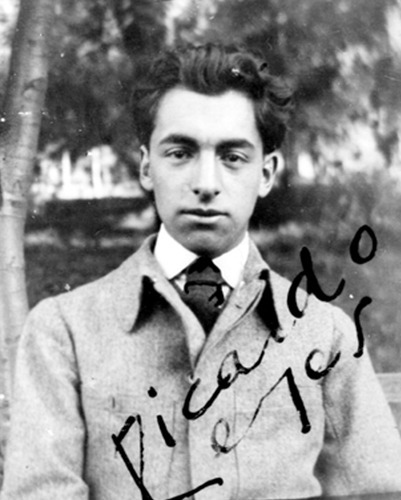
Happy Valentine’s Day, my darlings. I hope it is full of love poems and kisses. And, really, more kisses than poems, because even though poems are wonderful and all, kisses are, admittedly, slightly better.
Anyway, there is no one who does love poetry and the language of longing and tenderness and desire like Neruda. So here he is – from me to you. With imaginary kisses.
I Do Not Love You
I do not love you as if you were salt-rose, or topaz,
or the arrow of carnations the fire shoots off.
I love you as certain dark things are to be loved,
in secret, between the shadow and the soul.
I love you as the plant that never blooms
but carries in itself the light of hidden flowers;
thanks to your love a certain solid fragrance,
risen from the earth, lives darkly in my body.
I love you without knowing how, or when, or from where.
I love you straightforwardly, without complexities or pride;
so I love you because I know no other way
than this: where I does not exist, nor you,
so close that your hand on my chest is my hand,
so close that your eyes close as I fall asleep.
Translated by Stephen Tapscott
And if you’re in the mood for a good cry, you can watch Alan Rickman and Juliet Stevenson read “La Muerta” in both English and Spanish in this clip from “Truly, Madly, Deeply”. That movie, man. It destroys me.
Filed under: Uncategorized Tagged: love poems, pablo neruda, true love, Valentine's Day



